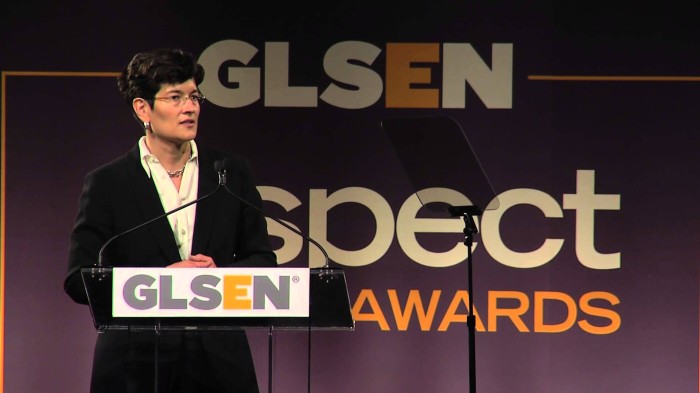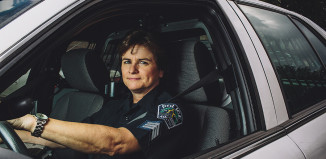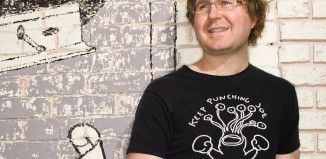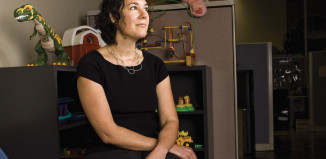Shortly after Eliza Byard graduated from high school, the Supreme Court issued its (since reversed) decision in Bowers vs. Hardwick that outlawed sex between two consenting gay adults. That moment helped to cement Byard’s desire to make social justice for LGBT people her life’s work. The executive director of the Gay, Lesbian and Straight Education Network (GLSEN), Byard spoke with me by phone to discuss safe schools, community building and what drives her interest in fighting for LGBT equality.
What sparked your passion for activism?
Here I was, excited about wanting to make the world a better place, and the Supreme Court said that who I was could be outlawed in this country. That moment of the complete disconnect between everything I hoped to achieve and then having that moment of “Oh, wait. There’s a basic problem here.” It was also in the midst of the dark days of the AIDS crisis; there was a sense of a community backed completely against a wall—coming out fighting. It was, wow, silence equals death and we have to do everything we can to save ourselves and save our friends. Bottom line was that we had to pull together for ourselves because everyone else was abandoning us. We battled through to having a sense of hope and a sense of what could happen if we pulled together as a community.
My family always told me that the most important opportunities in life are because of education and come through education. My mother was a high school English teacher and was one of the first volunteers for GLSEN when it was becoming a national organization in the early 1990s, helping to found the New York chapter. When I do things here now, I think about my mother’s dedication in trying to make a change for me; now that I’m a mom, I want to turn that around and pass it along for my own daughters and for students everywhere.
It’s easy to look around at the proliferation of gay/straight alliances and the improvements that have been made and become complacent. What are some of the bigger challenges facing LGBT youth now?
Our GLSEN survey from 2009 showed that, unfortunately, nine out of 10 lesbian, gay, bisexual or transgender students are still experiencing physical, verbal or sexual harassment. There is still a baseline of physical safety that we have to achieve that remains an issue. We’ve learned far too much about the cost of the bullying and violence that’s going on in schools everyday. That remains our priority until everyone is physically safe and emotionally free from fear.
Are you optimistic that organizations like GLSEN will at some point not be as needed in our society?
I hope that our expertise will be needed for different things in the future. A lot of what we’ve done over two decades—first, we had to prove that there were LGBT students in schools and that these things mattered. Second, we had to prove that LGBT issues in schools were a problem that everyone should care about. Then, we had to demonstrate how you could fix them. And then, we demonstrated that you could build programs to put into schools that would work. I’m hoping that one day, we won’t have to advocate and we’ll just get to implement. But that day is far off.
What major upcoming projects are you working on?
GLSEN is in the middle of the Safe Space Campaign. We’re working to get Safe Space Kits into every single secondary school in the country. We’re halfway through. Our goal is to have one in every middle and high school nationwide by the fall of 2013. Safe Space Kits are filled with stickers, posters and information for teachers about how to be good allies and build safe spaces for students. We know that one of the most important things for students is knowing that they have support from adults around them. One visible ally for students can save a life. Six visible allies can change a culture.




































